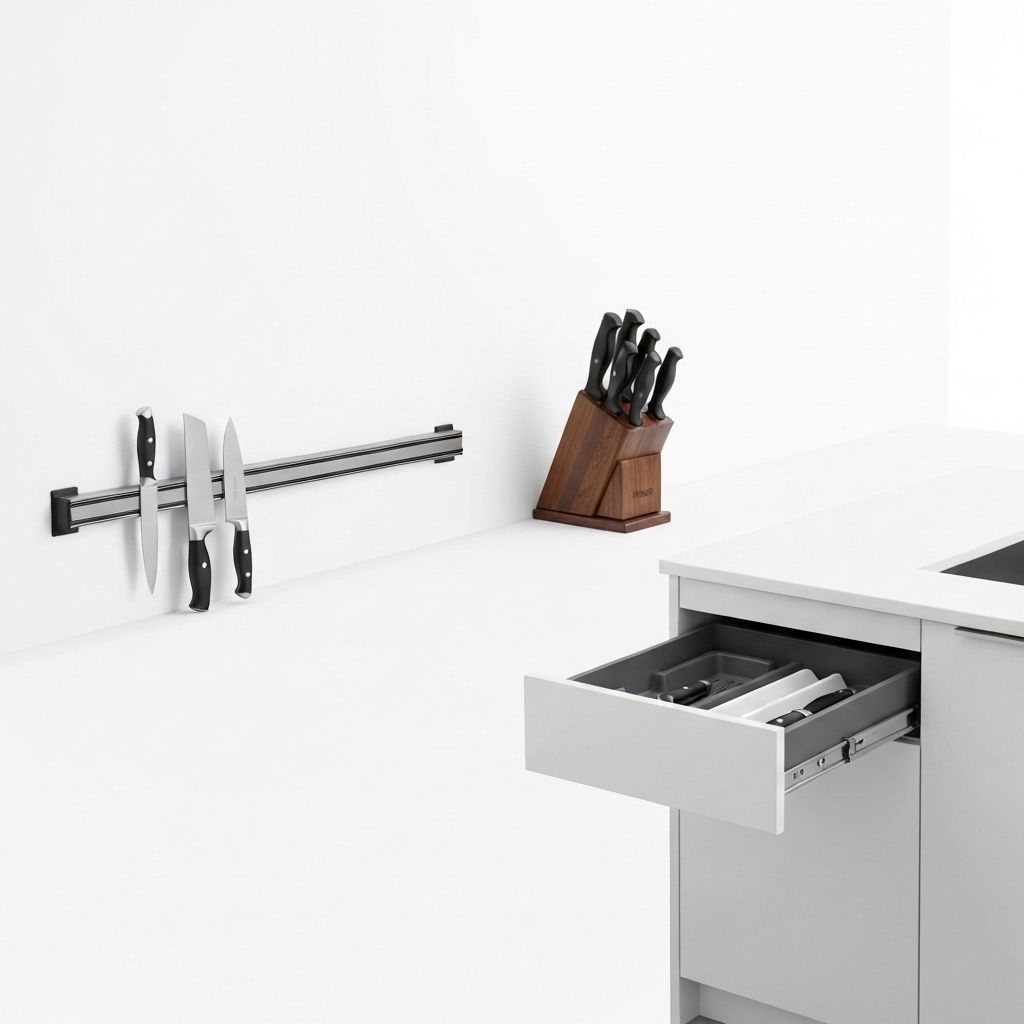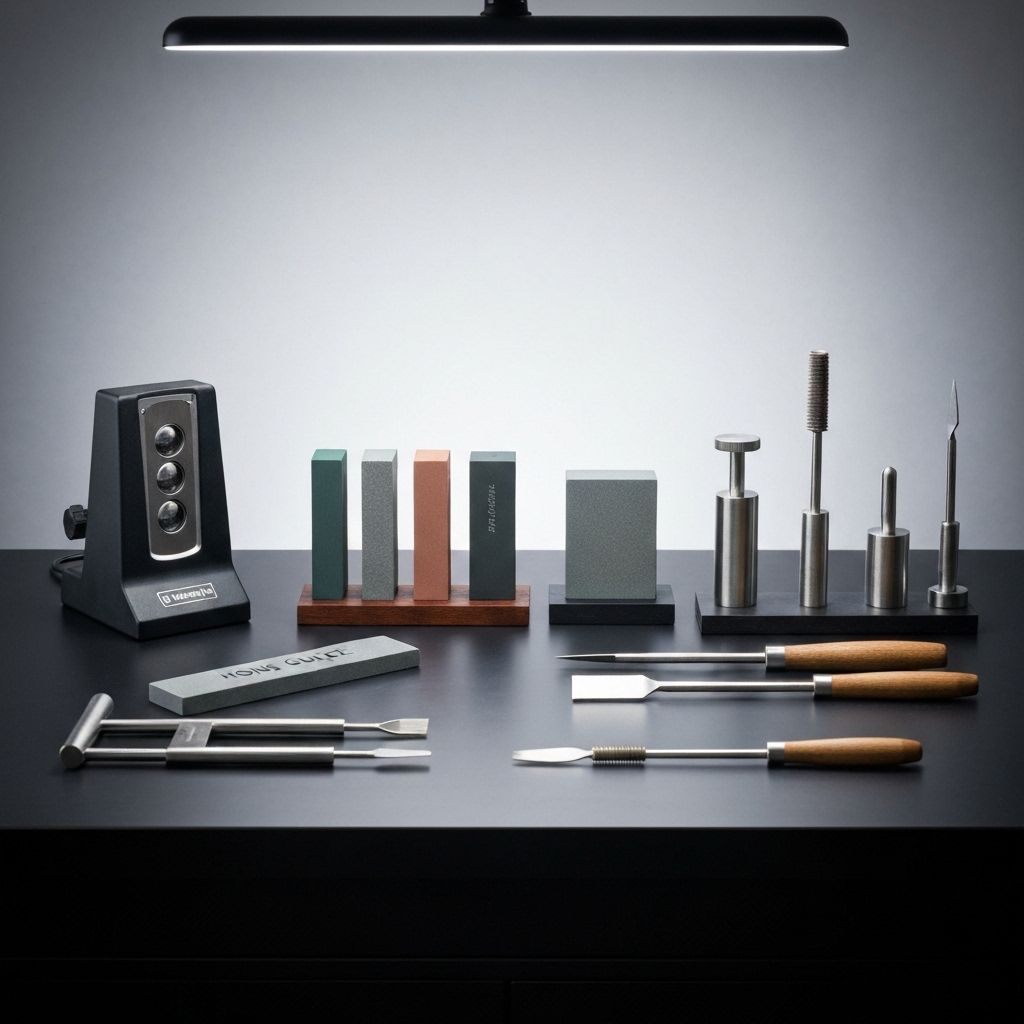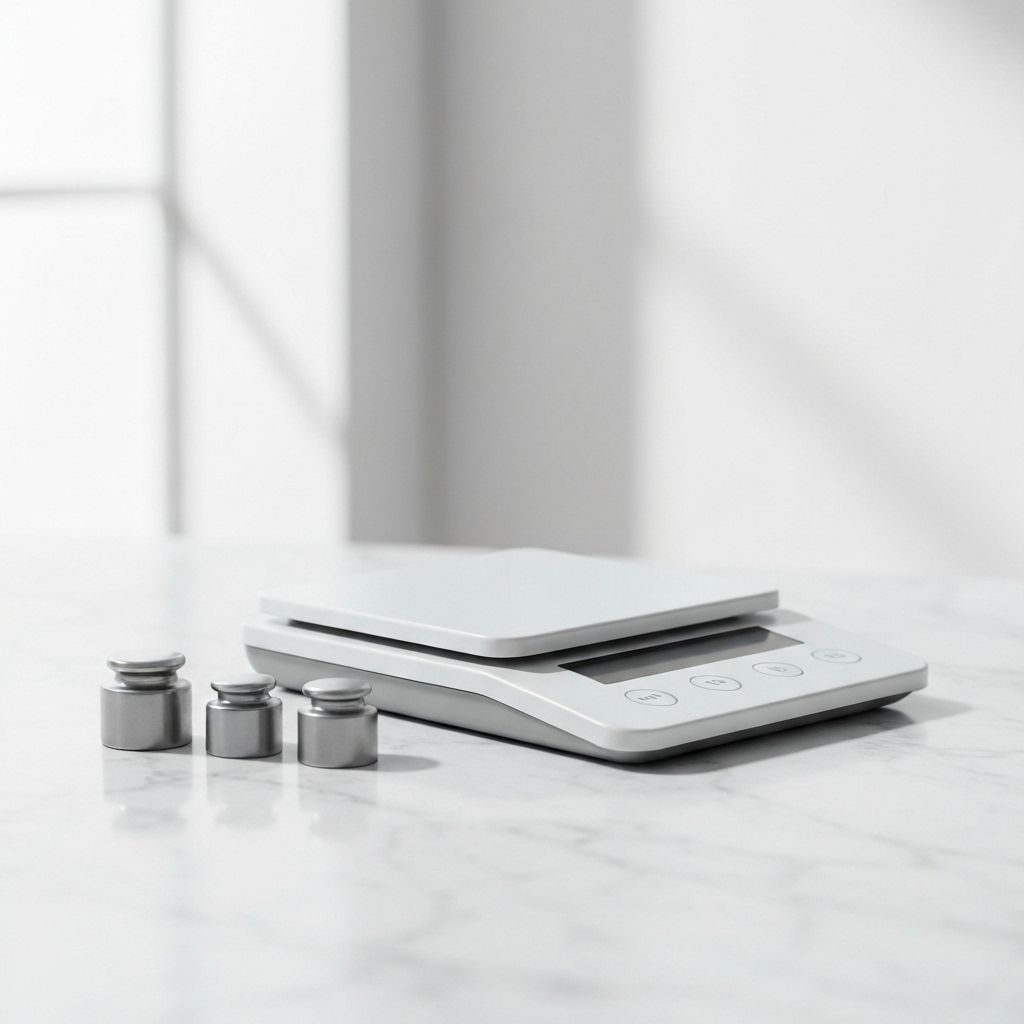Kitchen Knife Storage: Protecting Your Investment and Your Safety
Compare magnetic strips, knife blocks, and drawer organizers to find the ideal storage solution for your kitchen and lifestyle.
- Answer the main question in one sentence.
- Give the best pick and why in one line.
- Link to the product or guide for next step.

Proper knife storage extends blade life, maintains sharpness, and prevents accidents. The storage method you choose affects edge retention, kitchen safety, and daily workflow. Understanding the advantages and limitations of each option enables informed decisions.
Magnetic knife strips offer superior space efficiency and sanitation. Wall-mounted strips free valuable counter space while keeping knives visible and accessible. The open design prevents moisture accumulation and bacterial growth that plague traditional knife blocks. Strong magnetic fields secure knives safely, though weaker magnets may allow shifting or falling.
Installation height matters for safety. Mounting strips 48-60 inches above the floor keeps knives out of children's reach while remaining accessible for adults. The magnetic hold should be strong enough that knives don't slide down but gentle enough to remove with one hand. Test magnetic strength before committing to a location.
Traditional knife blocks consume counter space and present sanitation challenges. The slots harbor food particles and moisture, creating environments where bacteria thrive. Cleaning requires disassembly or specialized tools. Additionally, fixed slot sizes may not accommodate your specific knife collection, forcing awkward fits or leaving slots empty.
Modern knife blocks address traditional limitations. Slotless designs using flexible rods or bristles accommodate any knife size while allowing air circulation. These innovations maintain the counter-top convenience of traditional blocks while improving sanitation and versatility.
In-drawer storage protects knives from damage while keeping counters clear. However, loose knives in drawers dull quickly and create safety hazards. Dedicated drawer organizers with individual slots protect edges and prevent dangerous surprises when reaching into drawers. This solution works well for households with curious children, especially when combined with drawer locks.
Knife guards or sayas provide portable protection for individual knives. These covers enable safe drawer storage without dedicated organizers and protect knives during transport. Japanese-style wooden sayas absorb moisture while protecting edges, though they require more maintenance than plastic alternatives.
// RELATED_ARTICLES

Precision Maintenance: Caring for Your High-Carbon Steel Knives
A comprehensive guide to maintaining the performance and appearance of your precision cutlery.

Maintaining Precision: Scale Calibration and Care Protocols
Ensure your precision instruments maintain laboratory-grade accuracy with proper calibration and maintenance.